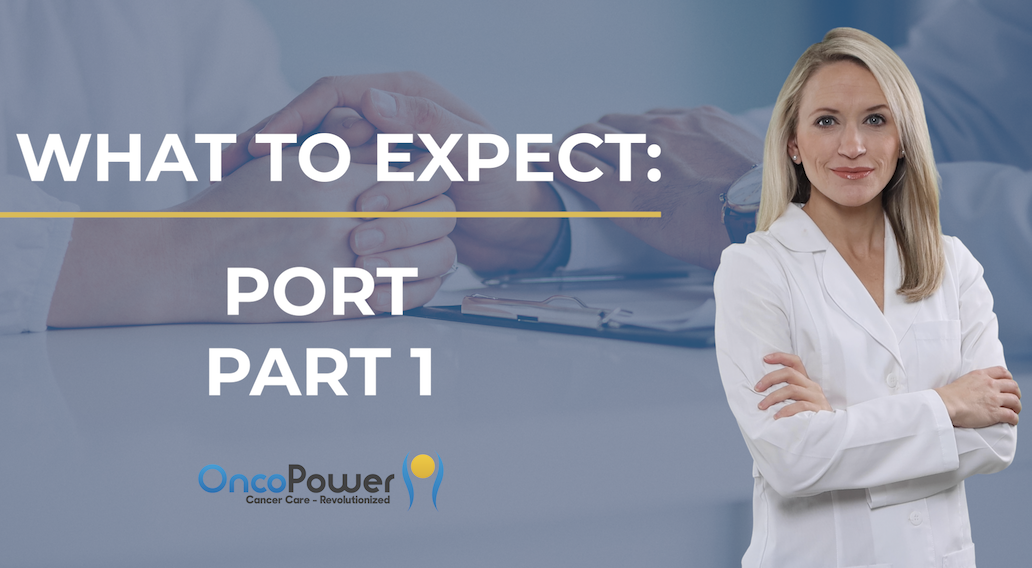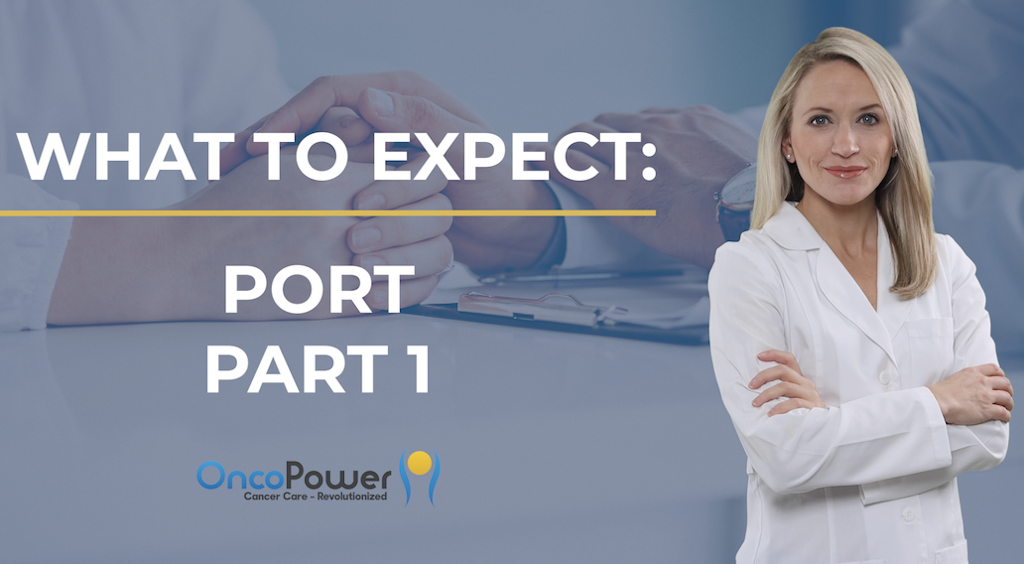Port Cancer Care
Apr 09, 2021
Share

What is a Port?

- A port is a device that is usually placed under the skin in the right side of the chest or under the arm. (picture of Single and Dual Ports). A port can have one or two access points.
- The port goes either under the skin of your chest or upper arm.
- It is attached to a thin, flexible tube (also called catheter) that is threaded into a large vein above the right side of the heart ((Picture of septum)
- A surgeon or a radiologist implants a port, usually with local anesthesia or conscious sedation in the operating room.
How does the port works?
- Your port will look like a small, raised area under your skin. The center of the disk which is raised somewhat is called the septum (Picture of port-a-cath and highlighted text below by the side)
- Fluids are put into or taken out of the port using a special needle that goes into the septum.
- The catheter connects to the septum to take the medicine or inject fluids right into the blood.
- Blood for lab tests can also be taken out through the catheter.
- When the needle is removed from the septum, no fluids or blood can leak out. (remove picture)
What is the purpose of implanting a port?
A port is used
- to give intravenous fluids, blood transfusions, chemotherapy, and other drugs as well as can be used for taking blood samples.
- for treatments, like continuous infusion therapy, that last longer than 1 day.
- to reduce the number of times a healthcare provider needs to insert a needle in your veins, and
- to reduce the risk of tissue and muscle damage with repeated needle sticks.
- The port can be used on the same day it is put in and may stay in place for weeks or months
During first 24 to 48 hours after surgery, the incision area will be tender and a little red. Most people don’t need pain medications and the discomfort usually goes away within 48 hours. If your pain persists, please contact your Oncologist.
You should also call your surgical nurse if you develop
- Severe pain
- Increased pain, swelling, warmth, or redness around the port.
- A fever of 100.5 F or above
- Bleeding from the port
- Swelling or a growing bruise.
Keeping it secure and dry:
- The incision wound will be covered by bandage till the wound heals for about 5-7 days.
- Please keep the bandage and wound areas dry. It may be a good idea to take a sponge bath or
- Take shower only after making sure the port site is covered and secured with a plastic wrap so water doesn’t not reach it.
- If you notice the bandage is pulling away, reinforce it with medical tape until you see your oncology nurse.
- The nurse will check on your dressing within the next days after surgery.
- Check your bandage daily for bleeding.
- If there’s bleeding, press firmly with a gauze for 15 minutes.
- If bleeding didn’t stop call your oncology nurse immediately. If it’s heavy bleeding visit emergency.
- Wearing the seatbelt will put pressure on your wound, try to avoid this by placing small pillow or folded towel between the strap and the wound.
- No exhausting activities until your wound heals.
- Also please do not to lift objects heavier than 10 pounds (4.5 kg) during this time.
After your wound heals, you can return to your normal daily activities.
You can swim with your implanted port as long as there is no needle in place.
Avoid playing any contact sports, such as football or rugby.
How a port is used in the hospital:
- Before you start receiving chemotherapy, Nurses will handle the port with sterile procedures as hand washing, sterile gloves and alcohol scrubbing. You can always ask if you noticed any different handling of your port.
- A dressing will also be placed over the port when it’s in use.
- During chemotherapy infusion, nurses will check your port for any signs of inflammation.
- If blood tests were needed, hands or arms’ veins will usually be used to get blood. This helps to avoid multiple accessing of the port, which increases risk of infection.
- The port will be flushed by a nurse after each use, and every 4 weeks when it’s not being used, to prevent becoming blocked with blood clots. Saline and heparin (a blood thinning medicine to prevent blood clots) are used.
What are the risks and side effects of the port?
Potential side effects include
- infections,
- blockage and
- clots.
Caring for the port helps to prevent these side effects.
Caring for the port at home:
- Always wash your hands with soap and water before and after caring for the port.
- Remind everyone who cares for your port to wash their hands.
- Wear clean medical gloves when you care for your port.
- Avoid touching the port if not needed.
- Clean the skin area surrounding the port every day.
- Check daily for redness, swelling, and oozing at the site of the port.
- Keep the port covered with bandage whenever the needle is in place.
- You will be able to feel the port under your skin, but it will not be noticeable by people.
- The skin covering the port will not need any special care.
- No bandage will be needed if the port is not in use.
Your oncology nurse will instruct you if it’s needed and they will demonstrate you or a family member how to do it.
- Never try to use your port without proper training from your caregiver.
- Do not hesitate to call us for training
- Have a well-trained nurse to help you at home if possible
- Supplies needed: gloves, alcohol pads, gauze, tubing and needle, saline syringe, heparin syringe
I will review with you the steps of accessing and flushing the port:
- Create a clean working space,
- Sterilize the surface with alcohol
- Wash your hands properly with soap and water
- Wear a mask during preparing and accessing your port
- First you will need to remove the air in the tubing attached to the needle
- Attach a syringe that contains saline to the tubing
- Open the clamp and slowly push saline through the tubing and needle. Then close the clamp and leave the syringe attached
- Wear clean medical gloves. Clean the port site and the surrounding skin with alcohol pads for 90 seconds then allow it to dry completely
- Feel the edges of the port with one hand, use the same hand to stretch the skin across your port and hold the port in place
- With the other hand insert the needle through your skin, into the center of the port and push it until you hit the back wall of the port.
- Open the tubing clamp, and slowly pull back on the syringe.
- If blood flows back into the tubing and syringe, the needle is in the proper place. If you do not see blood, you will need to change the position of the needle.
- Close the clamp on the tubing.
- For port flushing you will need:
- 10 ml normal saline syringe
- 10 ml heparin solution syringe
- Connect the saline syringe by opening the cap, avoid touching the tip of the syringe. Push the saline slowly.
- Clamp the tube after flushing with saline and before you connect the heparin syringe to prevent air bubbles from entering the tube.
- Push the heparin slowly. Then clamp the tubing. After that you can carefully remove the needle.
Trusted by cancer patients around the world.
Joan-Smith
Virginia, United States
ChuckHastings
Florida, United States
DebraPearl
Pennsylvania, United States
Jennweeks
Iowa , United States
PatrickDW
Western Cape, South Africa
Jamie-Alexander
Floroda United States
CJ
Liz
Florida, United States
NYCynthia
New York, United States
Ferdi
California, United States